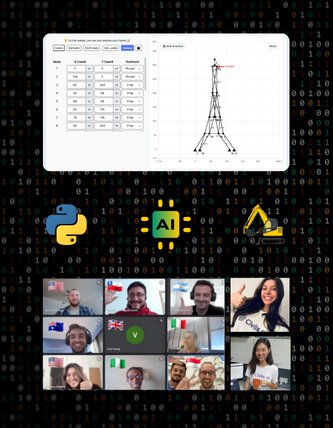Free Pile Length Calculator
Calculate pile capacity and length for driven, bored or secant piles using skin friction and base resistance.
Loading...
Result
Length
Results summary
EC7 Design Approach 1 + Combination 1 and Design Approach 2 used for calculation
Loading...
| Analysis result: | |
|
Minimum pile length: (with load testing)
|
|
|
Minimum pile length: (without load testing)
|
|
| Terminating strata: |
Piled foundation profile:
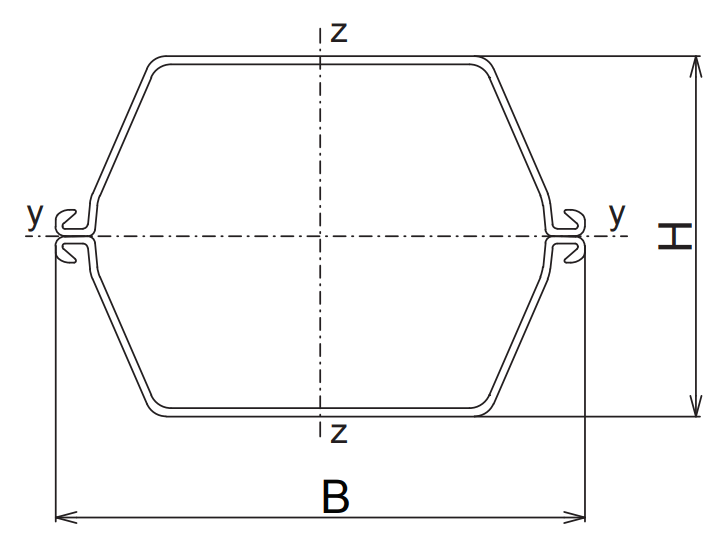
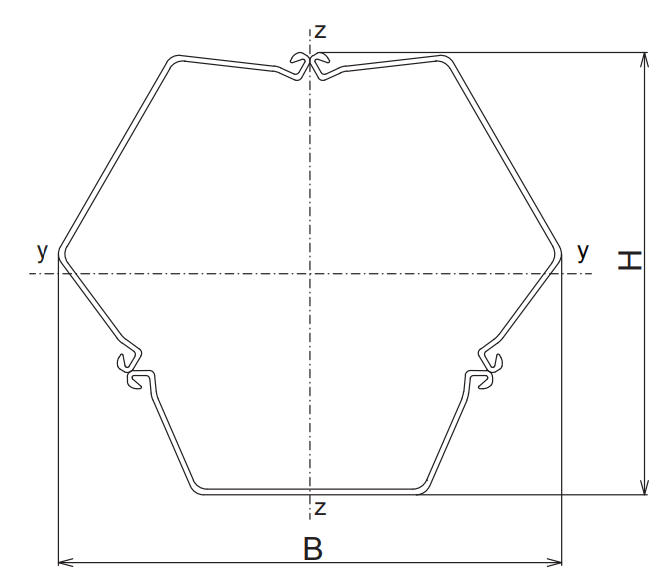
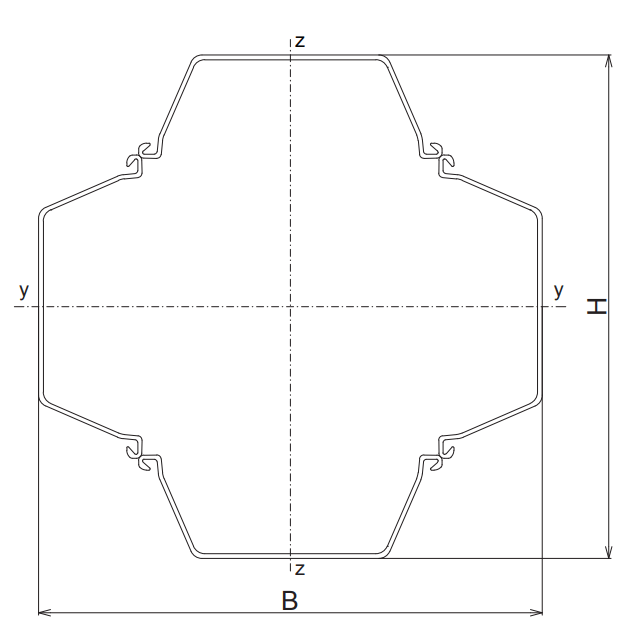
H = mm
B = mm
You're using the following product:
| Supplier | Product |
|---|---|
|
|
Piling properties
Use this menu to update the piled foundation profile.
Pile type:
Pile Diameter
m
Enter a number between 0 & 4.
Section
Enter a number between 0 and 8000.
Permanent load
kN
Enter a number between 0 and 8000.
Variable load
kN
Enter a number between 0 and 8000.
Predict building loading
No. of floors
Enter a number between 0 & 70.
Spacing of piles
m
Enter a number between 0 & 4.
Loading...
Design Approach 1 + Combination 1
The following table summarises the available skin friction and base resistance of each soil strata to calculate total pile resistance
Total pile loading calculation
Note that this algorithm rounds up to the nearest 1m pile depth.
| Design force | kN |
| Total resistance (kN) |
kN
|
| Total skin friction (kN) |
kN
|
| Base resistance (kN) |
kN
|
| Terminating strata | |
| Min. Pile length required |
Design Approach 2
The following table summarises the available skin friction and base resistance of each soil strata to calculate total pile resistance
Total pile loading calculation
Note that this algorithm rounds up to the nearest 1m pile depth.
| Design force | kN |
| Total resistance (kN) | kN |
| Total skin friction (kN) | kN |
| Base resistance (kN) | kN |
| Terminating strata | |
| Min. Pile length required |
How do piled foundations work?
- Piled foundations are required when a building or structure is too heavy to sit on top of the regular ground. Piled foundations spread the load of these buildings into deeper and stronger layers of the soil, helping to stabilize the building. Piled foundations transfer load in two ways depending on if they are bearing piles or skin friction piles. Bearing piles terminate at a hard strong layer of soil. In this case the pile cannot settle to activate any skin friction with the surrounding soil and therefore the entire load is transferred into the base. Skin friction piles allow the pile to settle meaning that the pile transfers applied load via friction into the surrounding soil.
What is the difference between bored and driven piles?
- Bored piles are drilled using a steel casing which is retracted before concrete is poured into the opening. Driven piles are often steel sections hammered in with a pile driver.
What are bored piles?
- Bored piles are installed using a drilling rig which excavates a profile in the earth using a rotating steel casing. The bored pile excavator must be able to reach to the required termination depth as per the design, usually multiple steel casings will be attached together to ensure this depth is reached. After the pile termination depth is reached the reinforcement needed as per the pile design is lowered into the steel casing and concrete is then poured using a tremie to the base of the piled foundation. After the concrete is fully poured and before the concrete has reached its full strength, the steel casing is removed.
What are driven piles?
- Driven piled foundations are installed using a pile driving rig, this rig either vibrates or hammers piles into the ground. This means that driven piles can only be installed into soft ground. Typically driven piles are steel H or I sections and these piles mainly act in friction and provide little end resistance. Contractors will somethimes have issues with this type of pile if hit any bolders or hard materials along the path of the pile.
What are secant piled walls?
- Secant piled walls are concrete overlapping piled. At first the 'female' piles are driven which are unreinforced plain concrete piles which are close to touching. The 'male' piles are then installed by drilling through the gaps between the 'female' piles are per the design and casting the 'male' piles as reinforced concrete, thus creating a secant piled wall.
How to calculate pile capacity in undrained conditions?
- Pile resistance is a combination of the end bearing resistance and adhesion of the soil around the pile.
- Pile capacity can be estimated using skin friction acting on the pile length and the bearing resistance of the base of the pile. For a pile terminating in a very stiff material, such as a rock the entire applied force on the pile will be transferred into bearing, moblising skin friction would require displacement of the pile to occur.
- Pile capacity is calculated as the shear strength of the soil multiplied by the surface area multiplied by the adhesion factor. This is then added to the shear strength of the base material multiplied by the base area, multiplied by the bearing capacity factor.
How to calculate pile capacity in drained conditions?
- Pile resistance is a combination of the end bearing resistance and skin friction of the soil around the pile.
- Pile capacity can be estimated using skin friction acting on the pile length and the bearing resistance of the base of the pile. For a pile terminating in a very stiff material, such as a rock the entire applied force on the pile will be transferred into bearing, moblising skin friction would require displacement of the pile to occur.
- Pile capacity is calculated as the frictional resistance of the soil multiplied by the surface area.
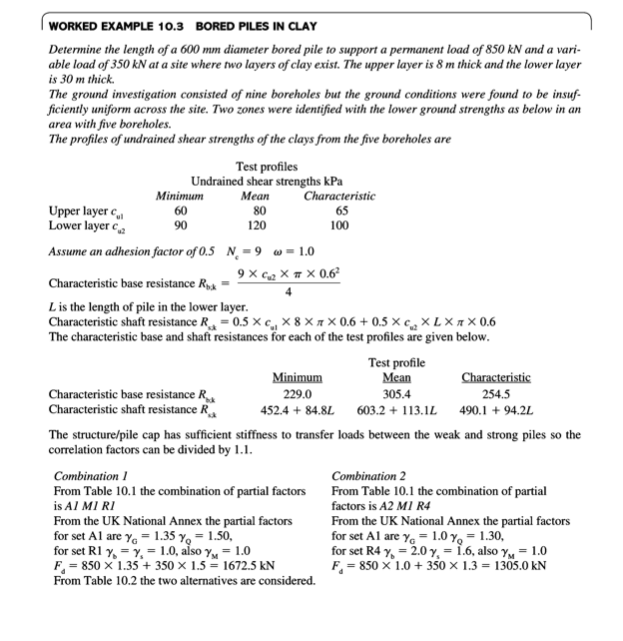
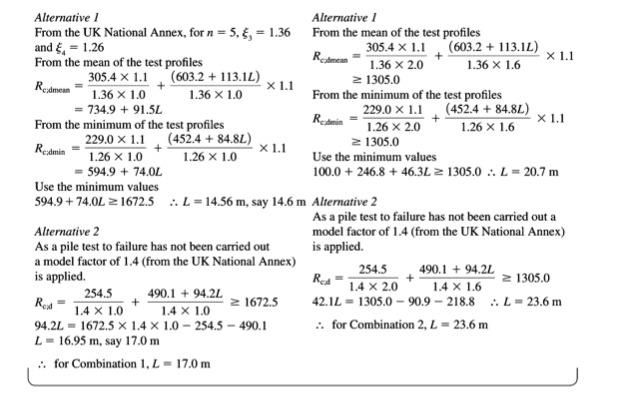

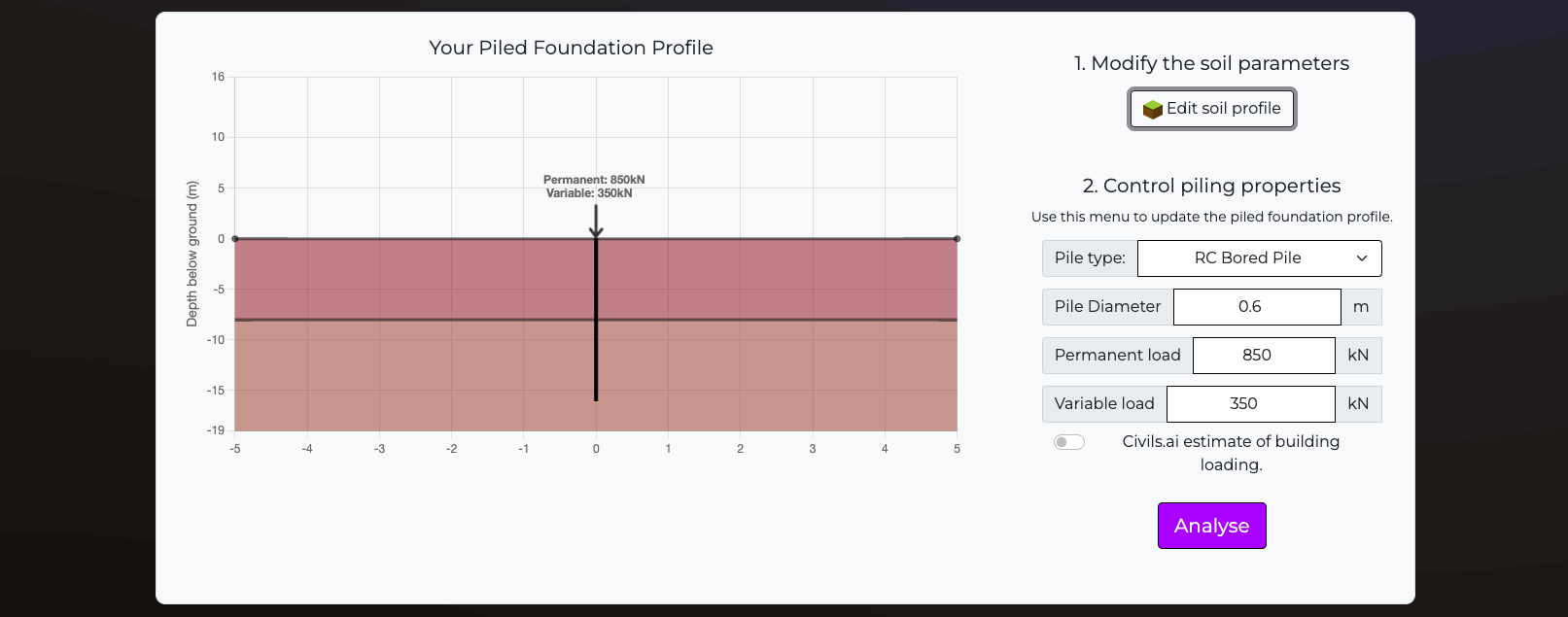

What's this calculator used for?
This free calculator helps Geotechnical Engineers caclulate pile length using the effective stress approach. The analysis follows the European regulations (Eurocode 7). The skin friction mobilised by the earth pressure acting on the pile is added to the base resistance to produce the overall resistance.
This pile design software can be used to design single driven piles, bored piles and secant piled walls for both drained and undrained conditions.
Results are calculated in accordance with Eurocode 7 with results for both maximum allowable pile loads with load testing and without load testing.
Interested in learning more about automation?

Enroll on our training certifications and learn how to code, build AI applications with no-code tools and automate tasks.


